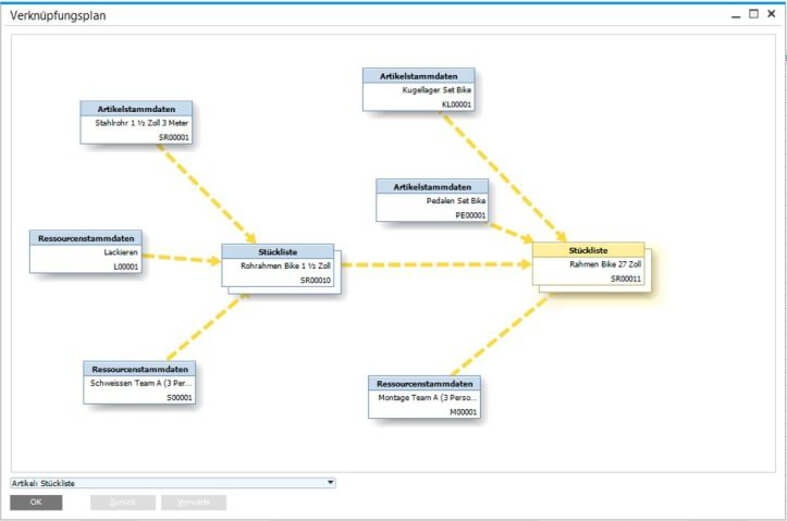In our "Did you know?" column, we present small features and tips that are available to you in SAP Business One - but may not be known to some people. Let's just call them non-obvious features.

Our tip today relates to the relationship map. Do you know this? The customer calls and wants to know if his goods have already been shipped. But he only has the order number at hand. Or the customer has a question about several
invoices he has received for his order. Now, of course, you can call up each document individually via the menu and work your way through from case to case. But you can also just open the first or known document and open the relationship map by right-clicking.
Now you can see the documents linked to this object in a graphic display. Important information is immediately available so that you are already informed or have a good overview. If you need further details, you can easily jump to the respective document by double-clicking ( authorisation required ). The relationship map remains open in the background so that you always have access to all documents. The example given here, from the sales order to the incoming payment, may seem quite straightforward, but I think we all know how complex some orders can become. Especially in connection with several production orders, many partial deliveries, etc.. And especially then, even the staff members who are not familiar with the specific case ( substitutes, secretaries, etc .) can quickly and easily make a statement.
In addition to the classic display of the document structure, other structures can also be displayed. For example, the articles associated with a document.
Or the bill of material structure of an item (raw materials and resources). As always, a double click on one of the tiles is sufficient to jump to the respective object.





